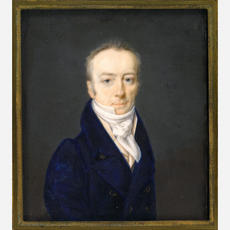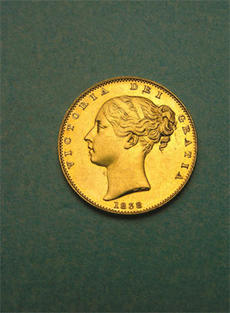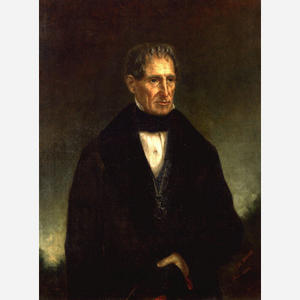 Have you been to the ATM this week to deposit a check or withdraw cash? Or is the ATM now obsolete since you pay for meals and other purchases with your iPhone, and deposit checks using a Virtual Wallet? The way we handle money is continuing to change rapidly, and it gets more convenient every day.
Have you been to the ATM this week to deposit a check or withdraw cash? Or is the ATM now obsolete since you pay for meals and other purchases with your iPhone, and deposit checks using a Virtual Wallet? The way we handle money is continuing to change rapidly, and it gets more convenient every day.
So how were financial transactions handled in the past? Consider the international status of currency transfer when the James Smithson bequest was awarded to the United States in 1838 to found the Smithsonian Institution. No ATMs, computers or even cell phones, how was it done? Toward the end of his life, under a clause in his will, Smithson left his fortune to the United States, a place he had never visited, to found in Washington, DC, under the name of the Smithsonian Institution, "an establishment for the increase and diffusion of knowledge among men." American lawyer Richard Rush had traveled to England as the agent appointed by the United States to file suit for the bequest in the British Court of Chancery in order to get Smithson's fortune back to the US. Prior to sailing to England, the US required Rush to post a bond of $500,000 to be sure he would not abscond with the funds, but Rush, a life-long public servant, considered his role in the Smithson bequest his most important contribution. A skilled barrister, he shepherded the suit through court in a mere two years (quite the feat considering a recent case had taken some 400 years . . . think about Charles Dickens' novel Bleak House).
 Once Rush secured the funds, he now had to figure out how to transport the proceeds from England to the United States. This was not an easy or secure task. There were no international wire transfers or electronic debits, just a large ocean to cross. Over the next several months, Rush sold Smithson's investments and converted all the proceeds into newly minted gold sovereigns. He insisted on newly minted coins, since gold was often clipped off the edges and older coins might be damaged. Rush then loaded eleven boxes containing a total of 104,960 sovereigns, eight shillings, and seven pence as well as Smithson's mineral collection, library, scientific notes, and personal effects and took them with him aboard the clipper ship, the Mediator. He watched over his cargo carefully for the six weeks at sea that included two serious gales.
Once Rush secured the funds, he now had to figure out how to transport the proceeds from England to the United States. This was not an easy or secure task. There were no international wire transfers or electronic debits, just a large ocean to cross. Over the next several months, Rush sold Smithson's investments and converted all the proceeds into newly minted gold sovereigns. He insisted on newly minted coins, since gold was often clipped off the edges and older coins might be damaged. Rush then loaded eleven boxes containing a total of 104,960 sovereigns, eight shillings, and seven pence as well as Smithson's mineral collection, library, scientific notes, and personal effects and took them with him aboard the clipper ship, the Mediator. He watched over his cargo carefully for the six weeks at sea that included two serious gales.
Finally, on August 29, 1838, Rush landed at South Street Seaport in New York City. The gold was immediately deposited with the Bank of America, but Rush wrote that he did not relax until until September 1, when it was transferred to the Treasurer of the United States Mint in Philadelphia, Pennsylvania. The 104,960 pounds, 8 shillings and 6 pence in gold sovereigns was melted down and reminted into United States coins worth $508,318.46. His duty done, Rush wrote to US Secretary of State John Forsyth that, "Somewhat worn down by fatigue since coming on shore, after an uncomfortable voyage of squalls, gales, and headwinds, I venture to ask a little repose at my home before proceeding to Washington."
So the next time you swipe a debit card or wave your virtual wallet, and it doesn't respond as quickly as you'd like, think of poor Rush nervously guarding his bulky but precious cargo for six long weeks as it crossed the stormy Atlantic.
Related Resources
Produced by the Smithsonian Institution Archives. For copyright questions, please see the Terms of Use.


Leave a Comment